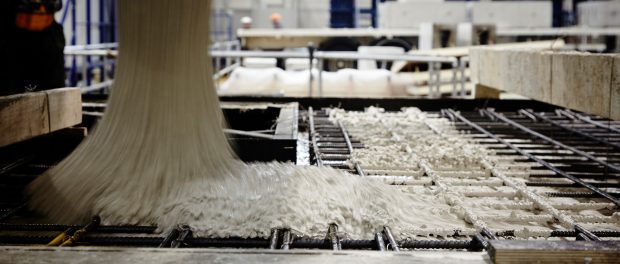Low carbon concrete to become standard on all Laing O’Rourke UK projects

New approach will accelerate net zero push and help clients meet their sustainability goals
Laing O’Rourke today announced it is mandating the switch to low carbon concrete on all of its new UK projects. The exclusive use of low carbon concrete from 1 April this year will accelerate the company’s progress towards its net zero targets.
The change will be introduced with immediate effect and applies to all new projects that begin main construction on or after 1 April 2023. It will result in a significant reduction in the company’s scope 3 carbon emissions.
Following a long-term research programme co-funded by Laing O’Rourke and Innovate UK, and in collaboration with the University of Cambridge and Sheffield University’s Advanced Manufacturing Research Centre (AMRC), the business has proven that a range of low carbon concrete options can be successfully deployed on projects as a like-for-like substitute for traditional concrete.
The overall carbon reduction will be 28 per cent when compared with the company’s concrete usage in 2022. This equates to a saving of 14.4 million kgCO2e, which is the same as planting 120,000 trees or 94 hectares of forest.
Cathal O’Rourke, Laing O’Rourke’s newly appointed Chief Operating Officer, said:
“We’ve committed to being a net zero company before 2050 and we are looking at every possible measure to accelerate our progress. In construction, the greatest challenge is reducing scope 3 emissions – the embodied carbon in purchased materials.
“Reducing all carbon emissions is a priority for our business. The built environment makes a significant contribution to global warming and constructors must work with clients and design partners to deploy new technologies and innovations that make modern methods the norm and enable us to build in less carbon intensive ways.”
Laing O’Rourke became a founding member of Concrete Zero in 2022 and is already decarbonising beyond the programme’s near-term objectives.
Laing O’Rourke’s low carbon concrete uses lower carbon alternatives to Portland cement. These include GGBS (Ground Granulated Blast-furnace Slag) and PFA (Pulverised Fly Ash), both of which are industrial by-products with a much lower carbon footprint. The company recognises that this is the first step in a longer journey to decarbonisation. Its ongoing research programme focuses on wider scale deployment of cement-free options, which are ultra-low carbon, and it expects to introduce more of these materials going forward.

